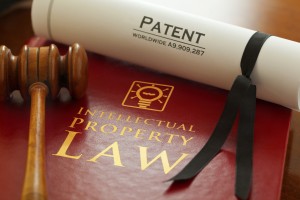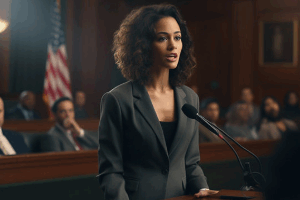 Texas continues to work its magic on behalf of patent plaintiffs, with two $250 million verdicts announced last week. The first, out of the Eastern District, saw Netlist smoke Samsung for a verdict in excess of $300 million in a case involving “memory modules.” Even though the verdict obtained was less than the $400 million that Netlist sought for infringement through March 2023, the company put out a triumphant press release heralding the fact that it had convinced the Texas jury that Samsung was a willful infringer. In the second case, this one out of Judge Alan Albright’s courtroom, a WDTX jury found that China-based drone maker SZ DJI willfully infringed on two of U.S. defense contractor Textron Innovations’ (maker of the Huey military chopper) patents. In recompense, the jury awarded over $275 million in damages, making last week a banner one for those interested in seeing a continuation of the recent trend toward large patent verdicts — particularly in cases tried before Texas juries.
Texas continues to work its magic on behalf of patent plaintiffs, with two $250 million verdicts announced last week. The first, out of the Eastern District, saw Netlist smoke Samsung for a verdict in excess of $300 million in a case involving “memory modules.” Even though the verdict obtained was less than the $400 million that Netlist sought for infringement through March 2023, the company put out a triumphant press release heralding the fact that it had convinced the Texas jury that Samsung was a willful infringer. In the second case, this one out of Judge Alan Albright’s courtroom, a WDTX jury found that China-based drone maker SZ DJI willfully infringed on two of U.S. defense contractor Textron Innovations’ (maker of the Huey military chopper) patents. In recompense, the jury awarded over $275 million in damages, making last week a banner one for those interested in seeing a continuation of the recent trend toward large patent verdicts — particularly in cases tried before Texas juries.
We know, of course, that many challenges await both of the victors in terms of getting the verdicts to stick, absent settlement. For Netlist, navigating the federal circuit appeal process while also keeping investors enthused and optimistic will be a priority. And for Textron, the challenges may be even more acute, as the bulk of the jury’s award — $248.2 million, to be exact — was tied to infringement of just one claim, claim 13, of Textron’s ‘752 patent. That creates a very interesting dynamic with respect to post-trial motions as well as appeal, where the bulk of damages riding on a single claim may have outsized impact on the ultimate value of Textron’s enforcement effort. At the same time, both Netlist and Textron could be the recipients of even more good news preappeal, to the extent that the judges presiding over their cases determine that they are entitled to enhanced damages due to the willfulness findings made by their respective juries.
Verdicts against Samsung, one of the most targeted patent defendants on a perennial basis, are important in their own right. For purposes of this column, however, I’d like to focus on some takeaways from the verdict in the Textron case — which in my view, at least, presents us with a few twists to consider that are a variation off the more typical verdict against a large smartphone manufacturer. To start, I think the identities of the parties involved in the case are worthy of discussion. Second, I think the verdict tells us something about the reason why Albright remains so popular as a patent jurist. And third, I think the verdict serves as a potent reminder of how damages in patent cases can very much revolve around one key patent at issue — or as in this case, just one claim from one of the asserted patents.
We can start with our first takeaway, presented in question form. Why do the identities of the parties in this case matter? Let’s start with Textron, which is obviously a large defense-oriented conglomerate that is much more famous for the halo — or helo — products it creates than the bland corporate moniker it operates under. From a jury perspective, therefore, Textron’s identity as a key supplier to the U.S. military surely held some appeal, even as the company rightly faced an argument at trial that with respect to the accused products it was nothing more than a nonpracticing entity. In other words, Textron had to overcome the argument that it was not practicing the asserted patents in terms of offering any consumer-facing products. Despite that, like other NPEs in Texas recently, it was still able to secure a patent mega-verdict, which may at a minimum point to the diminishing returns to patent defendants in terms of putting the plaintiff’s business practices under a spotlight as part of their defense cases.
In contrast to Textron, SZ DJI is a well-known maker of consumer drones that many Americans have purchased and continue to enjoy. But they were also the party accused of infringement, with the jury also hearing that the company had been put on a Department of Defense blacklist as a vendor that the U.S. military is not supposed to do business with. It is hard to know how much of an impact that information had on the jury, but the contrast between a GI Joe-approved supplier of famed military materiel and a Chinese company that ended up on a D.C. no-go list was probably not without import in terms of coloring the jury’s view of the case. For its part, SZ DJI kept pressing the distinctions between it and Textron’s businesses even post-verdict: “Textron is a military helicopter company. DJI is a civilian drone company. No commonality exists between the technologies.”
For our second takeaway, we can be direct and brief. Albright gets cases to trial, even in the face of some serious discovery issues engendered by the presence of a foreign-based defendant. And even in the face of a number of summary judgment motions, including challenges under Alice and Textron’s attempt to enforce IPR estoppel in advance of trial. Albright referred those pretrial motions to the magistrate, before taking over for the pretrial conference and the trial itself. All told, the short time from case filing to verdict — July 2021 to April 2023 — is perhaps the biggest reason for Albright’s popularity with IP owners. Again, how much the shape of the verdict shapes on post-trial motions and the inevitable appeal remains uncertain. But patent owners that have a choice about whether to file in a court where time to trial is under two years will always think hard about doing so.
Lastly, it is striking how important Textron’s ‘752 patent was to the damages awarded. It is common for patent cases to get streamlined for trial, with this case being no exception. After starting with five asserted patents, the jury’s verdict centered on two — claim 13 of the ‘752 and four claims from Textron’s ‘909 patent. In rough terms, the ‘752 deals with drone flight control, or “hover hold,” technology, while the ‘909 is directed to the ability of a drone to follow a moving object. In terms of value, the ‘752 was determined as having much greater importance by the jury, commensurate with the importance of the patented technology to the value of the infringing drones. At a minimum, the damages verdict reminds us that even within a given set of patents, there may be one of much greater enforcement value, which puts a premium on having a clear damages presentation at trial that helps the jury properly apportion damages as part of a winning verdict.

The Law Firm’s Guide To Trust Accounting And Three-Way Reconciliation
Proper trust accounting and three-way reconciliation are essential for protecting client funds and avoiding serious compliance risks. In this guide, we break down these critical processes and show how legal-specific software can help your firm stay accurate, efficient, and audit-ready.
Ultimately, there are even more lessons we can learn from this important verdict out of one of America’s leading patent courts. For patent owners, the size of the verdict will be heartening, even more so because there are so many Texas plaintiffs waiting for their turn before a jury. For defendants, the verdict is another reminder of the potential exposure they face when confronted by NPE-wielded patents, particularly those that are sourced from a company with real pedigree and innovation history. This situation is not yet fully sorted out, of course. But now the parties must move forward with a verdict hovering over the remaining proceedings.
Please feel free to send comments or questions to me at [email protected] or via Twitter: @gkroub. Any topic suggestions or thoughts are most welcome.
Gaston Kroub lives in Brooklyn and is a founding partner of Kroub, Silbersher & Kolmykov PLLC, an intellectual property litigation boutique, and Markman Advisors LLC, a leading consultancy on patent issues for the investment community. Gaston’s practice focuses on intellectual property litigation and related counseling, with a strong focus on patent matters. You can reach him at [email protected] or follow him on Twitter: @gkroub.
